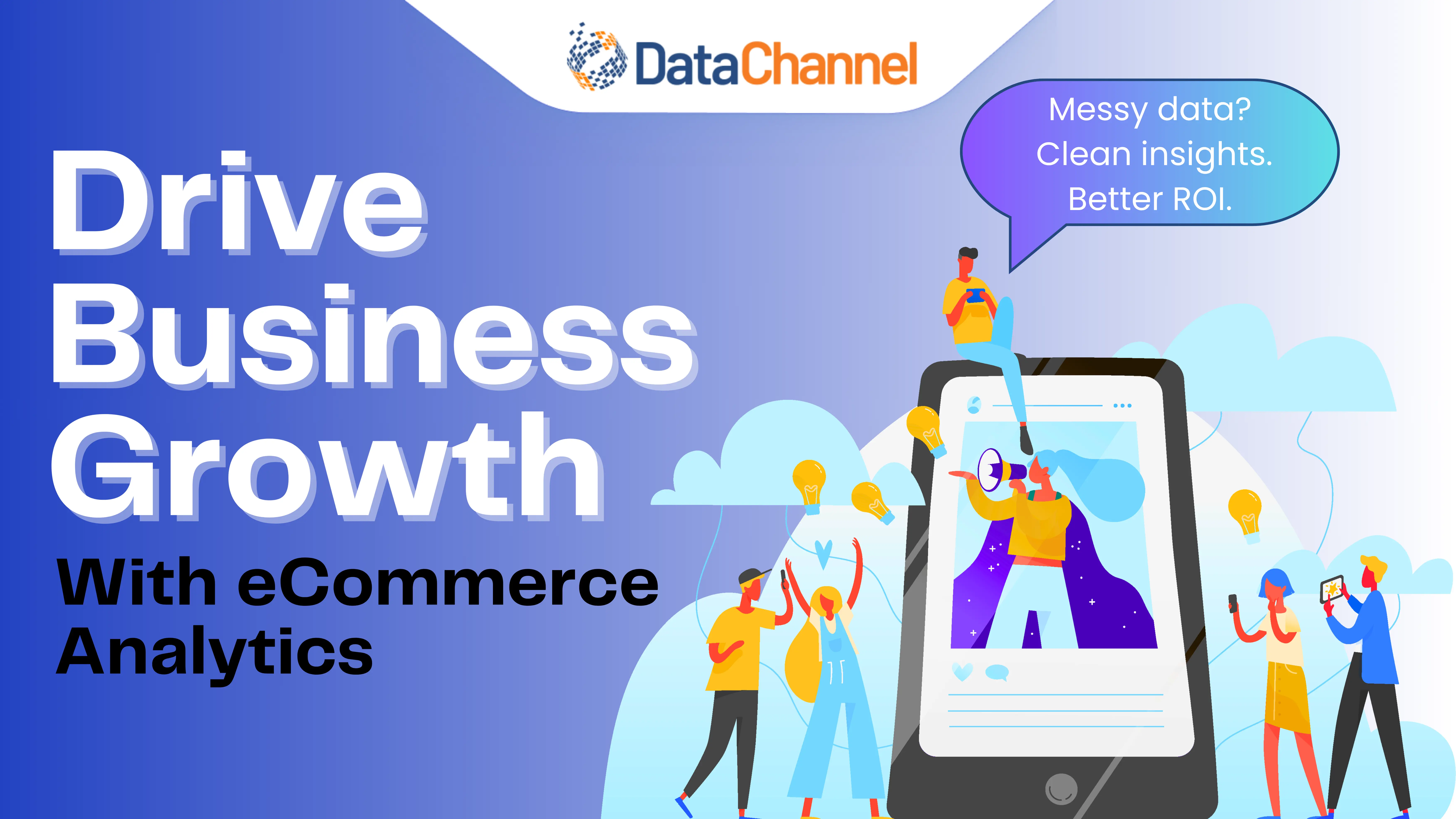
Unlock the true potential of your campaigns with Amazon Demand-Side Platform (DSP)

Communication is the driving force on which eCommerce relies, the better the communication between the brand and customers, the better will be the positive messaging surrounding the brand. The best way for a brand to communicate its image to customers is through advertisements. In today’s digital landscape, all eCommerce companies are realizing the importance of personalized advertisements as customers (7 out of 10) have also become comfortable with them.
With an ad revenue of 31.81 billion USD, Amazon is one of the most used platforms for running advertisements. Amazon enabled advertising on its own platform in 2012 with the launch of Amazon Marketing Services (AMS). This let advertisers run sponsored ads both on and off Amazon channels to boost their brand awareness, sales, and reach wider audiences.
What is Amazon DSP?
Amazon Demand Side Platform (DSP) was launched in the year 2018 to enable advertisers to run programmatic advertisements both on Amazon channels (Kindle, Prime Video, Audible, Fire TV, IMDB & Echo), its affiliated partners, and third-party websites. With Amazon DSP the advertisers can bid for digital ad space/slots in real-time programmatically using machine learning algorithms.
The differentiator of DSP is that it allows ads for both Amazon sellers and non-sellers by allowing the latter to use the advertisements (image, audio & video) to redirect customers to their own websites.
Unlike other advertising services like Sponsored Products, Brands & Displays that work on the PPC model (Pay-per-click), Amazon DSP uses the CPM (cost per thousand ad impressions) one that enables advertisers to run targeted ad campaigns and reach out to potential audiences across the marketing funnel (Awareness, Consideration & Purchase). As digital marketing evolves, consulting with a PPC agency in Dallas (or any needed location), might be beneficial to grasp the detailed differences between these advertising strategies. Such an agency could help clarify which model, PPC or CPM, aligns better with your specific business objectives.

Types of Audiences that can be targeted using Amazon DSP

The different types of audiences that can be targeted using Amazon DSP are:
- Demographics audience targeting: It is ideal to target audiences based on demographics if an advertiser wants to target groups of people that have similar ages, qualifications, gender, or economic bracket.
- Lifestyle audience targeting: The best audiences for lifestyle targeting are those that have comparable lifestyle buying behavior– who look for products that fit their lifestyle preferences.
- Life-event & Interest audience targeting: Let's say someone has purchased a new home and is looking for decorative items for it, or let's say football fans are looking for their favorite team's jersey during the football world cup. These audiences fall under the category of life-event and interest-driven audience targeting and can be shown relevant ads based on their search query.
- History-based audience targeting: Movie ads of the preferred genre can be targeted at audiences based on their history, and customers who put an item in their shopping cart can be remarketed with ads to encourage them to complete the transaction.
- Behavioral audience Targeting: Behavioral audience targeting refers to the targeting of audiences who exhibit particular behaviors, such as searching for a specific product and then performing similar searches in the upcoming 30 to 40 days.
- Dynamic audience Targeting: Audiences showing interest in your product by searching for related products on other websites. For eg., displaying sneaker’s ads whenever a user searches for the keyword ‘sneakers’ across the web.
- Lookalike audience Targeting: This kind of audience targeting is most effective when it targets people who share your existing customer base's interests or buying behavior.
- Custom audience targeting: The advertisers can leverage DMP data or their data (hashed data- email_id, contact list, etc) by installing a tracking pixel on their website and allowing Amazon to access that data to target potential customers.

Amazon DSP Service Model
Amazon DSP offers two service models for advertisers for managing their campaigns:
- Amazon’s Management Service: Under this service model Amazon offers its own programmatic management of ad campaigns for the advertisers with a minimum total ad spend of $ 35000 USD.
- Advertiser Self-service Model: The campaign management in this service model is either done by the advertiser directly or through an ad agency. The minimum fee associated is generally around $ 3000 USD (retargeting). The self-service model gives complete autonomy to the advertiser regarding the placement & ad budget, but unlike Amazon's management service model, it requires a good understanding of the programmatic advertising ecosystem.
Benefits of Amazon Demand-Side Platform (DSP)
- Granular Insights: With Amazon DSP, advertisers gain access to insights regarding the campaign’s performance against their set goals. For Amazon sellers, the insights can be as granular as the add-to-cart rate, no. of items sold, and total sales. On the other hand for non-sellers, the granularity can be surrounding the pixel conversion rate of their own website.
- Scalability: Advertisers can make use of cross-device campaign management for their customers at scale, both on and off Amazon. They also gain access to Amazon’s owned and operated management service or self-service that enables better targeting and campaign optimization through machine learning algorithms.
- Safety & Privacy: Brand safety is closely monitored by Amazon DSP, which also evaluates other websites and real-time bids either manually or through third-party integrations.
- Campaign Optimization: Advertisers get two options for optimizing their campaigns— manual & automatic on Amazon DSP. In manual optimization, advertisers set the campaign KPIs themselves such as goals, frequency caps, budget, and placement. The different types of creatives that can be leveraged are images, videos, displays, etc. While in automatic optimization Amazon uses its own optimization engine which bids for ad spaces in an automated manner and adjusts the ad budget accordingly based on first-party insights such as customer purchasing patterns.
What does a usual Amazon DSP campaign consist of?
An advertiser generally has to look out for three things when running a campaign on Amazon DSP namely:
- Campaign KPIs: The campaign KPIs generally comprise— campaign goals i.e., increasing brand awareness, engagement, or brand loyalty. Apart from campaign goals, advertisers also need to cap the frequency of ad campaigns and their placement (onsite or offsite). Furthermore, the goals, frequency, and conversion rate of the campaign will determine the last KPI— The campaign budget.
- Creative types: There are multiple creative options available for an advertiser— images, videos (of different sizes), display, banner, and pop-up ads for desktop & mobile. The finest solutions for Amazon sellers that want to direct customers to their product details page are responsive and dynamic eCommerce creatives. Display ads for up to 20 featured products are generated automatically in responsive eCommerce creatives (REC). Also, it enables advertisers to choose the creatives' display size and track campaign effectiveness both on and off Amazon. In dynamic eCommerce creatives (DEA), advertisers gain access to 5 ASINs (Amazon Standard Item Number) when they use Amazon’s own management service & 1 ASIN when they go for the self-service model.
- Audiences: As mentioned earlier, different audience segments both on and off Amazon can be targeted using DSP. However, the placement of the ad campaigns relies solely on the advertiser whether they want to direct the customers to their own website, or product details page on Amazon itself.

Strategizing Amazon DSP campaigns
As the same campaign or metric cannot be used to target customers at different stages of the funnel or gauge the effectiveness of ad campaigns especially running during the holiday sale season, it is crucial to strategically plan DSP initiatives.
Demographics, lifestyle, and lookalike targeting will apply to the audience segmentation at the top of the funnel. Effective cost per thousand ad impressions (eCPM), as well as the number of searches conducted by potential customers, can be the metrics used to assess the effectiveness of the advertising campaigns.
Campaigns with goals like enhancing engagement & providing specific solutions to customer problems can be used for audiences who are dynamic, life-event & interest-driven. Views of the website, product details page, and the average cost per product page detail view might serve as metrics for this step of the funnel.
The purchase stage, the final stage of the funnel, is where audience targeting based on behavior and history can be applied. Customers begin promoting the brand positively and become brand loyal in this stage of the funnel. The measures that influence conversion and sales include ROAS (Return on Ad Spend), ACOS (Advertising Cost of Sales), and repeat purchase rate.
How DataChannel can help you with Amazon DSP?
All well-known advertising, marketing, CRM, finance, and eCommerce systems are supported by DataChannel, along with Amazon Demand-Side Platform (DSP). With the help of our integration with DSP, advertisers can get detailed information in real-time on various ad products, including sponsored displays, brands, and products, as well as conversion tracking tools like the Amazon Standard Identification Number (ASIN). Simply stream relevant data into a data warehouse of your choice, and leverage data-driven workflows to reach your target market. Using DataChannel, you can get information on everything– from customer demographics, buying patterns, most bought items, and much more just within a few clicks.
DataChannel also helps you integrate Amazon DSP data with
- Extensive Logging, fault tolerance, and automated recovery that allow for dependable and reliable pipelines. If we are unable to recover, the extensive notifications will alert you via Slack, app, and email to take appropriate action.
- Powerful scheduling and orchestration feature with granular control over scheduling down to the exact minute.
- Granular control over what data to move. Unlike most tools which are highly opinionated and dictate what data they would move, we allow you the ability to choose down to field level what data you need. If you need to add another dimension or metric down the line, our easy-to-use UI lets you do that in a single click without any breaking changes to your downstream process.
- Managed Data Warehouse. While cloud data warehouses offer immense flexibility and opportunity, managing them can be a hassle without the right team and resources. If you do not want the trouble of managing them in-house, use our managed warehouse offering and get started today. Whenever you feel you are ready to do it in-house, simply configure your own warehouse and direct pipelines to it.
- Reverse ETL. Be future-ready and don’t let your data sit idle in the data warehouse or stay limited to your BI dashboards. The unidimensional approach toward data management is now undergoing a paradigm change. Instead, use DataChannel’s reverse ETL offering to send data to the tools your business teams use every day. Set up alerts & notifications on top of your data warehouse and sync customer data across all platforms converting your data warehouse into a powerful CDP (Customer Data Platform). You can even preview the data without ever leaving the platform.
Get access to our diverse portfolio of connectors and bridge the gap between data and insights with DataChannel. Schedule a demo call today.
Try DataChannel Free for 14 days









